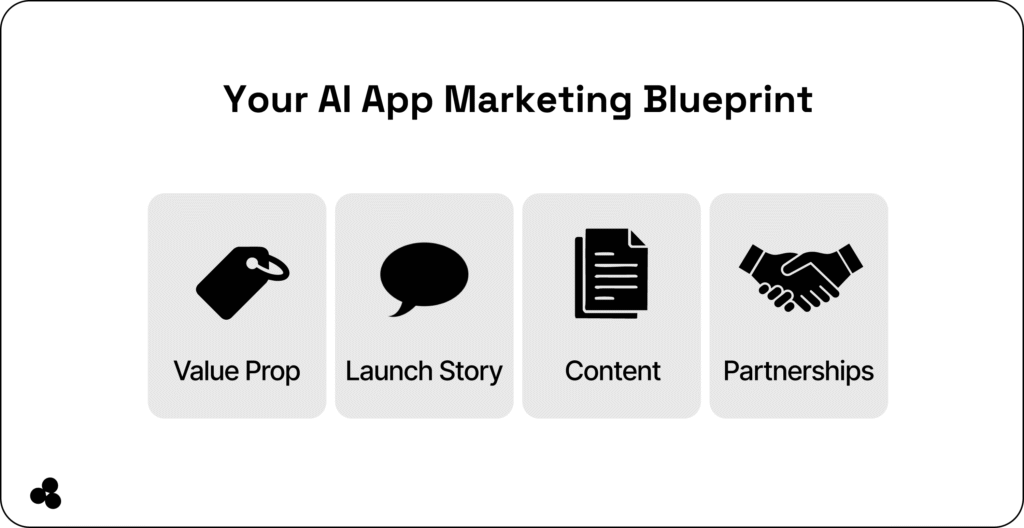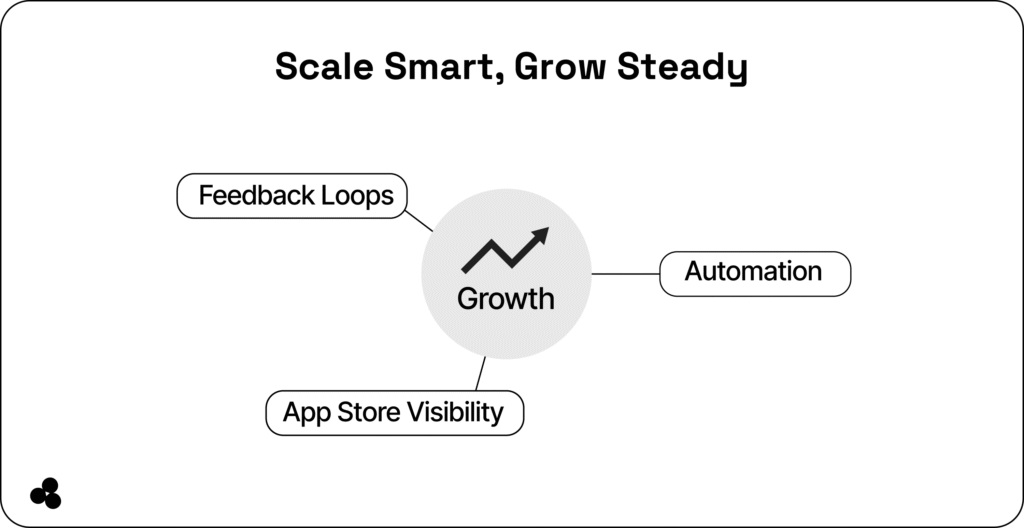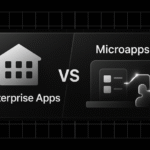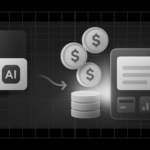If you’re trying to figure out how to market an AI app, you’re already ahead of most developers.
Many creators focus entirely on shipping features, but without visibility, even the smartest AI app disappears into the noise.
Marketing is not optional. It’s the engine that gets your product discovered, builds trust, and turns a clever idea into real income.
The good news? You don’t need a large team or a massive budget. You need a clear value proposition, a strong launch story, targeted content, and smart distribution.
No fluff, no guesswork — just a repeatable blueprint that helps your AI microapp stand out in 2025.

Define Your AI App’s Unique Value Proposition
Before doing anything else, clarify why your app matters. This shapes everything from your messaging to your SEO.
Ask yourself:
- What single problem does my app solve?
- Why is this solution better than existing options?
- What transformation does it deliver?
Example: A microapp that instantly summarizes Zoom meetings?
Your value prop becomes: 👉 “Summarize every meeting in 30 seconds. Skip the replay. Stay informed.”
This becomes your website headline, your X bio, your App Store description — everywhere.
The fact is, builders often neglect marketing. A Reddit survey of indie game developers found that 52% spend zero hours per week on marketing, and 57% make less than $4,000, a direct reflection of under-investment in visibility.
💬 How do I know if my AI app has product–market fit? If users return without reminders, share it organically, or ask for improvements tied to the core workflow, you’re on the right track.
💡 Tip: Browse the Microapp store to see how top-performing tools communicate their niche. Many succeed because they do one thing exceptionally well and communicate it clearly.
Craft a Launch Story That Builds Emotional Buy-In
People don’t connect with features; they connect with the story behind them.
Include:
- The problem you felt
- Why did you build the tool
- Your “aha!” moment
- Early wins or beta-user feedback
Example hook: “I missed three client payments in a month because every invoicing system felt bloated — so I built the simple tool I wished existed.”
Pair it with:
- A 30–60 second demo video
- Screenshots
- Quotes from early testers
💬 How do I market an AI app if I have no audience yet? Engage in niche communities (Reddit, X, Discord, Slack groups). Offer value first by answering questions. Then share your tool naturally.
This builds credibility long before you “sell.”
👉 Check out our article on how to get a passive income by developing microapp tools and how to market your AI app.
Content Marketing That Doesn’t Waste Your Time
You don’t need to blog daily — consistently answer the questions your users already have.
Start with what your app solves. If your AI app helps HR teams screen resumes faster, write something like:
- “How AI Can Save Recruiters 10 Hours a Week”
Use:
- Simple explanations
- Before/after workflows
- Real examples and screenshots
- Targeted keywords related to how to market an AI app
💬 What’s the fastest way to get my first 100 users? Microapp marketplace + X posts + Reddit engagement. A 30-second demo video can outperform 10 blog posts.
Builder Tip: Use questions from Reddit and Indie Hackers as prompts for content. Every question someone asks you is an opportunity.
👉 Check out our article on case management software and how you can make your app work for you here.
Build Partnerships to Multiply Your Reach
When it comes to how to market an AI app, don’t try to sell alone. Strategic partnerships are one of the most overlooked (yet highest-leverage) tactics.
Look for:
- Tools that integrate with yours
- Creators who teach your target audience
- Other Microapp builders with complementary apps
Examples:
- If your app works with Notion → collaborate with productivity YouTubers
- If you use OpenAI → contribute to AI developer newsletters
- If someone on Microapp builds something complementary → bundle your apps
💬 Should I run ads for a new AI app? Not yet. Validate first. Ads amplify what already works; they don’t fix weak messaging or unclear positioning.
Growth Tip: Make your app embeddable. Distribution inside ecosystems (like Microapp) gives you recurring organic discovery.
👉 Check how you should price your app and learn how to build and sell niche apps.

Scale Without Burning Out
Growth should be structured — not reactive.
Set up feedback loops:
- Crisp
- Typeform
- In-app prompts
Collect data on:
- Where users drop off
- Which features do they want
- What confuses them
Automate:
- Email onboarding
- Content templates
- Social scheduling
💬 Is it safe to market my AI app publicly before I scale? Yes, ensure basic security (API key protection, rate limits, privacy disclaimers). You don’t need enterprise-level security at launch.
Marketing becomes easier as your app evolves. Keep refining your value proposition every 60–90 days.
👉 Learn how you can build your own mortgage calculator tool and check out the best online invoice generator tools.

Comparison Table: Excel vs SaaS vs Microapp for Marketing AI Apps
| Feature / Approach | Excel / Manual Tools | SaaS Platforms | Microapp Approach |
|---|---|---|---|
| Ease of Setup | Low – manual configuration | Medium – setup required | High – ready-to-use templates |
| Customization | High, but technical | Limited by vendor | Flexible – single-purpose design |
| Cost | Low upfront, high time cost | Subscription fees | Low + scalable, pay for features used |
| Speed of Iteration | Slow – formula changes required | Medium – depends on platform | Fast – launch updates instantly |
| Focus on Core Value | Low – distracting | Medium – some bloat | High – lightweight, user-focused |
| Integration with Other Tools | Manual imports | Often limited | Built for integrations, seamless |
| Marketing Impact | Minimal – internal only | Moderate – platform dependent | Strong – embedded audience & discoverable |
💡 Tip: Using a Microapp makes it easier to scale your AI app marketing efforts without wasting time on complicated tools.
Launch Your AI Microapp and Grow Your User Base Today
Most builders ship their app, then stop. But the real growth begins after launch.
Now you know how to:
- Define your value
- Tell a compelling story
- Create high-impact content
- Build partnerships
- Grow sustainably
Your next step is to put it all into motion.
The Microapp platform gives you a built-in audience searching for lightweight, focused tools like yours, so publish your microapp and let users discover what you’ve built.
Your app deserves visibility. It deserves traction. And it deserves a launch strategy that matches the quality of your product.







